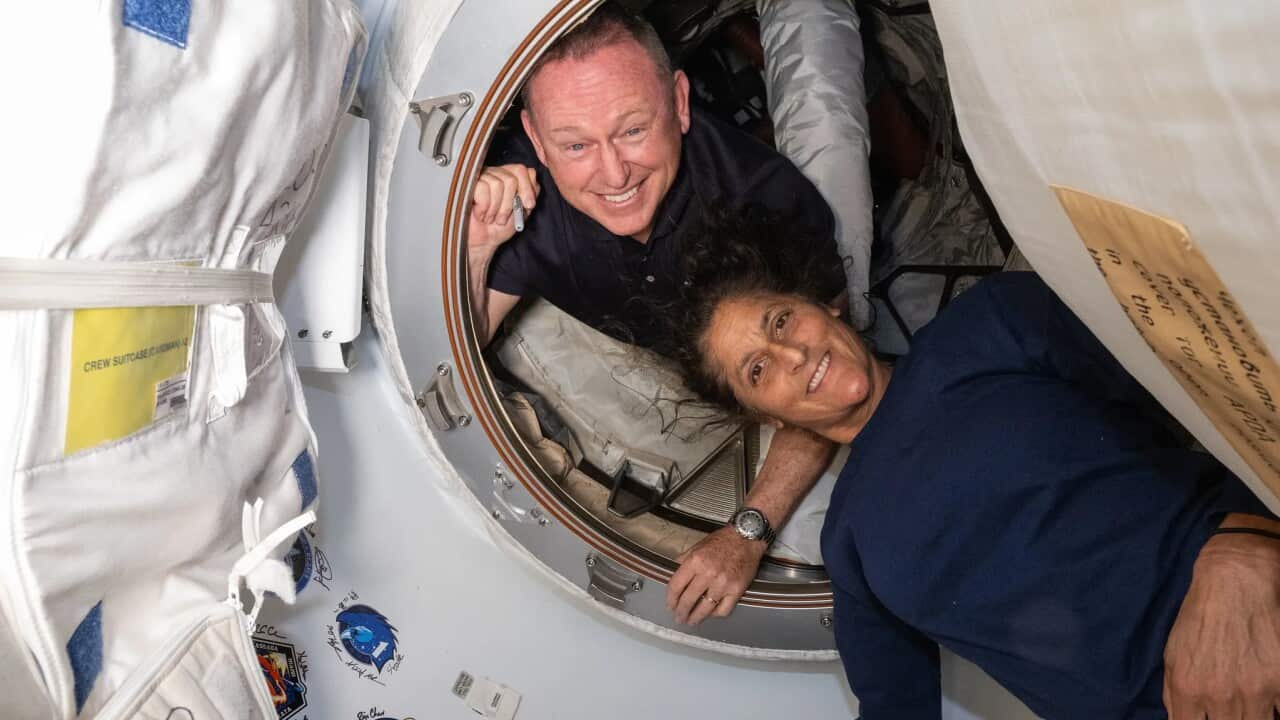Two astronauts who have been stuck on the International Space Station (ISS) since June will return to earth early next year on a Space X vehicle, NASA has announced.
Barry “Butch” Wilmore and Sunita “Suni” Williams flew to the ISS on 5 June on the Boeing Starliner capsule.
It was meant to be an eight-day stay but issues with Starliner’s propulsion system have led to NASA deeming it too risky to carry the crew home.
NASA said that by returning the Boeing spacecraft to Earth without the crew they can monitor the performance of Starliner without risking Wilmore and Williams’ lives.
NASA administrator Bill Nelson told media the “decision to keep Butch and Suni aboard the International Space Station and bring Boeing’s Starliner home uncrewed is the result of our commitment to safety: our core value and our North Star”.
Starliner is expected to depart from the space station and land on Earth in early September. The spacecraft can undock from the ISS and deorbit autonomously.
How will the SpaceX flight work?
NASA’s decision to tap Boeing’s top space rival to return the astronauts is one of the most consequential the agency has made in years.
The SpaceX Crew-9 mission will launch on one of the agency’s Dragon spacecraft and bring Wilmore and Williams home in February 2025.
SpaceX, a privately funded space company, was founded in 2002 by businessman and investor Elon Musk with the goal of reducing the cost of space transportation and eventually colonising Mars.
The Dragon spacecraft is capable of carrying up to seven passengers and was the first commercial spacecraft to take humans to the ISS.
The Dragon completed its first test flight with a crew in 2020, which earned the SpaceX spacecraft certification from NASA.
It has been launched 46 times and visited the ISS 42 times.
The mission was originally slated with four crew members but will instead launch with two people, making room for Wilmore and Williams.
NASA is currently working with SpaceX to reconfigure the seats on the Dragon spacecraft, adjusting it to carry additional cargo, personal effects, and spacesuits specifically tailored for the SpaceX craft.
The Dragon suits include a 3D-printed helmet, gloves compatible with the spacecraft’s touchscreens and a single connection point between the suit and the spacecraft that provides communications, cooling systems and pressurisation.
The Crew-9 mission is the ninth rotational mission to the ISS under NASA’s Commercial Crew program, which works with the American aerospace industry to operate transportation from the US to the ISS.
What does this mean for Boeing?
Boeing had hoped its Starliner test mission would redeem the troubled program after years of development problems and more than US$1.6 billion ($2.4 billion) in budget overruns since 2016.
Boeing has struggled to develop Starliner for years. The spacecraft failed a 2019 test to launch to the ISS but then mostly succeeded in 2022, although it also encountered thruster problems during that flight.
The June mission with its first crew was required before NASA could certify the capsule for routine flights but now the certification path has been upended.
Barry Wilmore and Sunita Williams inspect safety hardware aboard the International Space Station. Source: AP, AAP / NASA
Starliner safety testing from Earth since June has raised more difficult engineering questions and ultimately failed to quell concerns of NASA officials about its ability to make a return trip with the crew.
The now-uncertain path to certification adds to the crises already faced by Boeing, after a door panel blew off a 737 MAX passenger jet in midair in January.
Wimore and Williams have both previously completed two long-duration stays aboard the ISS and are currently working alongside other crew in the station.
NASA said the ISS is well-stocked for the stay and resupply missions frequently launched to the station, including SpaceX resupply missions planned towards the end of the year.
With additional reporting by the Australian Associated Press.

